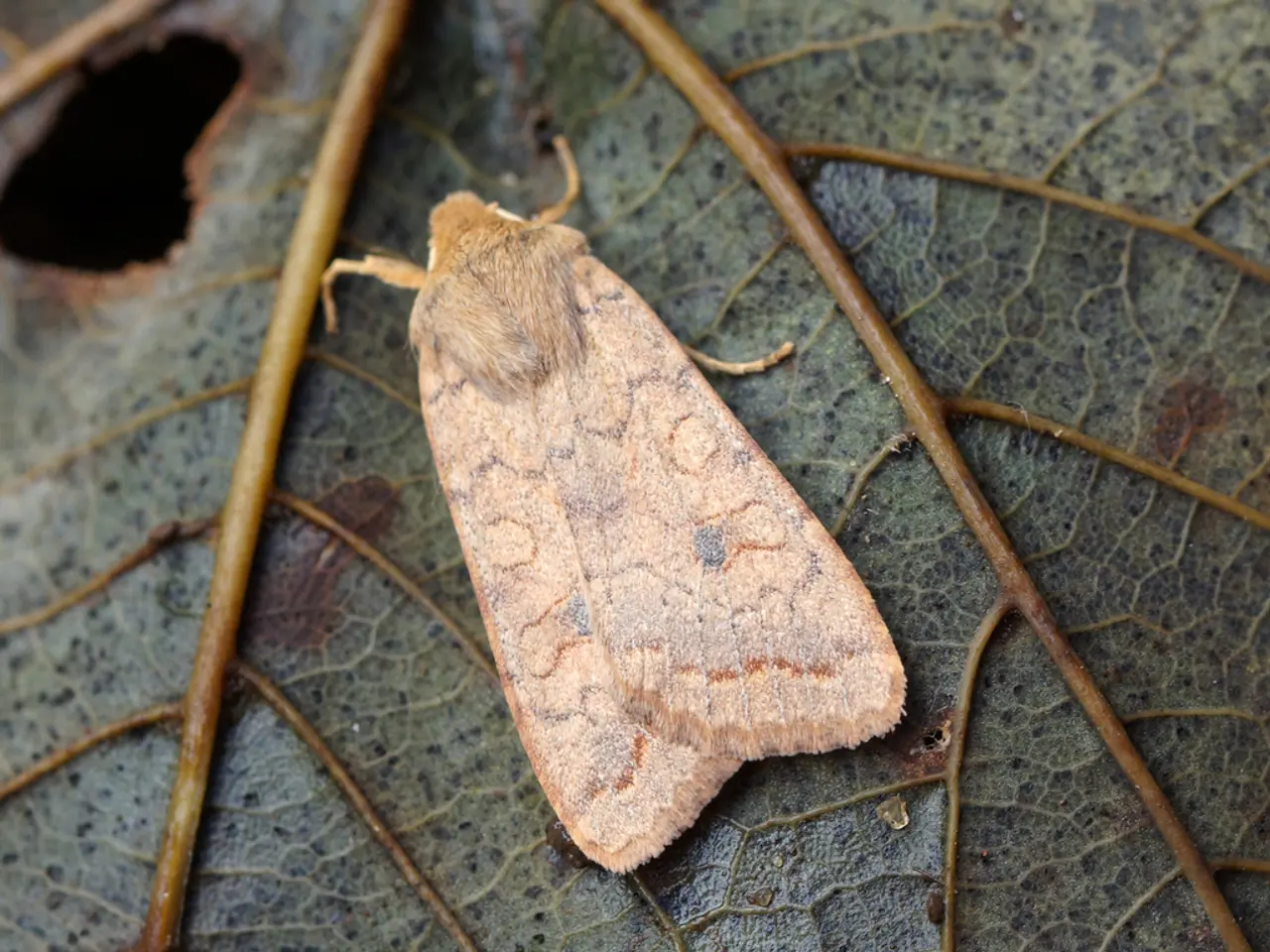Identifying and Addressing Leaf Spots: Causes and Solutions
In the world of gardening, leaf spot diseases can pose a significant challenge for plant enthusiasts. These diseases, caused by a variety of fungal and bacterial pathogens, can manifest as characteristic spots and leaf damage symptoms.
Leaf spots often appear as small, round, reddish, purplish, or dark spots, sometimes with white, gray, or tan centers (fungal spots) or yellow halos (bacterial spots). As they grow, these spots may enlarge, become angular or irregular, often browning or yellowing at the edges. This discoloration, wilting, drooping, or premature leaf drop can affect overall plant health.
On some plants like beans, brown spots that may be bacterial or fungal develop, often worsened by moist conditions. Specific signs such as "insect-like" spores under the microscope characterize certain fungal pathogens like Entomosporium causing leaf spots on pear trees.
Less commonly, leaf spot can be caused by bacteria, with Pseudomonas and Xanthomonas being common types. Even less common is leaf spot caused by a foliar nematode, with Aphelenchoides being the most common nematode to affect plants in this way.
To effectively manage leaf spot diseases, an integrated approach is key. This includes early detection through regular inspections of leaves, including undersides, for initial small spots or fungal spores, to remove infected leaves promptly and prevent spread.
Sanitation plays a crucial role in prevention. Remove and properly dispose of infected plant debris and leaves, do not compost to avoid re-infection. Keep areas around trees and shrubs clean of fallen foliage, especially in fall. Keep trees and shrubs trimmed to provide good air flow through the canopy and remove any heavily infected branches.
Avoid prolonged leaf wetness by watering plants at the base in the morning, avoiding overhead irrigation to reduce spread through splashing water. Improve air circulation by spacing plants adequately and supporting climbing plants to allow foliage to dry quickly and reduce humidity.
Crop rotation can help break the pathogen life cycle, especially for seed- and soil-borne fungi and bacteria. Use plant cultivars bred for resistance to specific bacterial or fungal leaf spots where available. Chemical treatments, such as copper-based bactericides or fungicides, can be used as part of integrated pest management but should be applied carefully to avoid resistance development.
Lastly, use certified disease-free seeds and transplants since many leaf spot pathogens can overwinter on seeds or soil. By adhering to these preventative and management measures, gardeners can significantly reduce the impact of leaf spot diseases on their plants.
Engaging in regular home-and-garden activities like gardening can provide an opportunity to spot early signs of leaf spot diseases on plants. To maintain a healthy home environment and garden, it's essential to practice good sanitation by promptly removing infected leaves, disposing of plant debris properly, and keeping areas clean, especially during fall.




